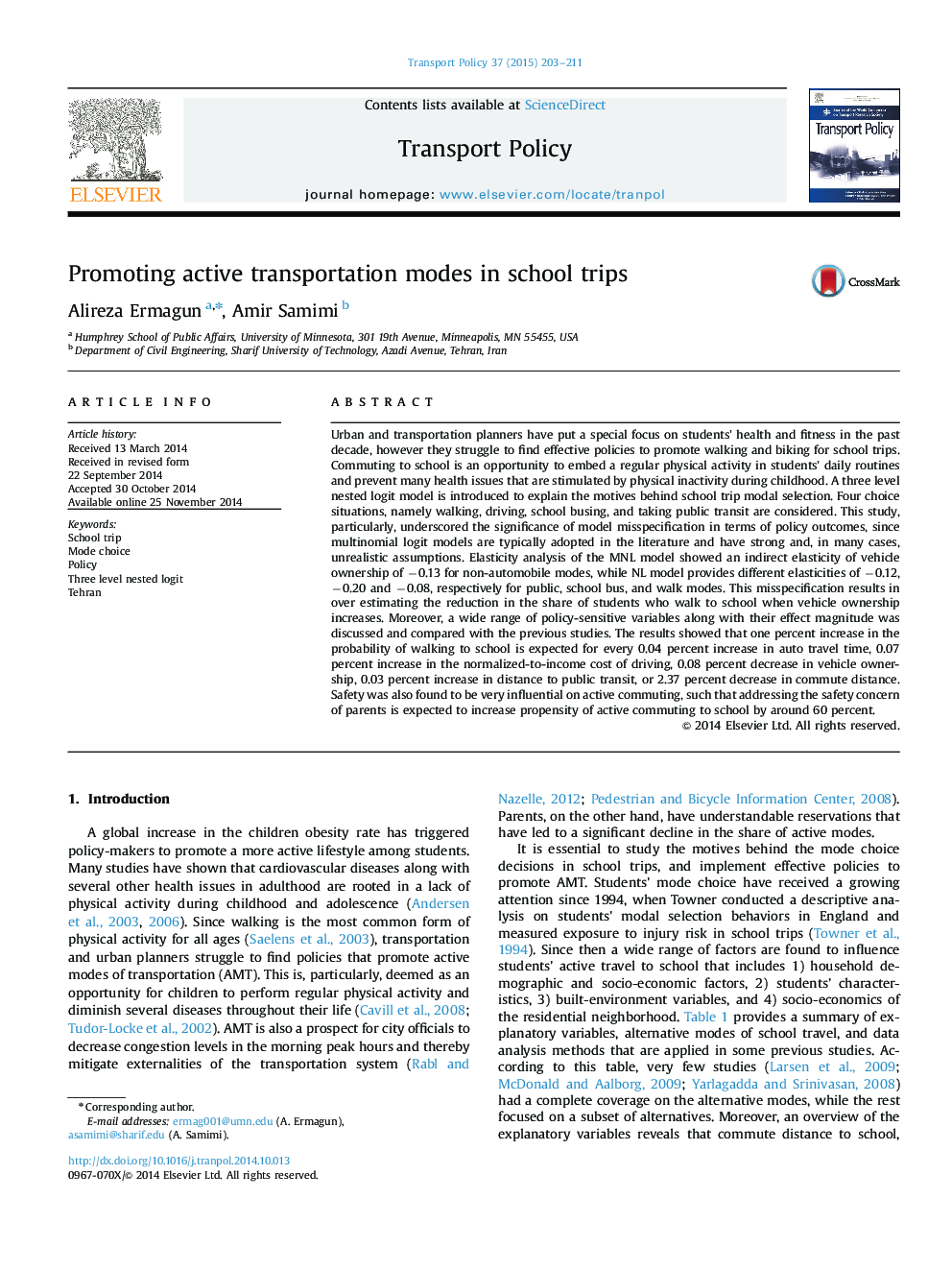| کد مقاله | کد نشریه | سال انتشار | مقاله انگلیسی | نسخه تمام متن |
|---|---|---|---|---|
| 1064929 | 1485840 | 2015 | 9 صفحه PDF | دانلود رایگان |
• The significance of model misspecification is underscored in terms of policy outcomes.
• Every 2.37% decrease in commute distance increases the probability of walking by 1%.
• Distance to the bus station has a direct elasticity of 0.32 in public transit mode.
• Addressing the safety concern of parents increases the probability of walking by 60%.
Urban and transportation planners have put a special focus on students' health and fitness in the past decade, however they struggle to find effective policies to promote walking and biking for school trips. Commuting to school is an opportunity to embed a regular physical activity in students' daily routines and prevent many health issues that are stimulated by physical inactivity during childhood. A three level nested logit model is introduced to explain the motives behind school trip modal selection. Four choice situations, namely walking, driving, school busing, and taking public transit are considered. This study, particularly, underscored the significance of model misspecification in terms of policy outcomes, since multinomial logit models are typically adopted in the literature and have strong and, in many cases, unrealistic assumptions. Elasticity analysis of the MNL model showed an indirect elasticity of vehicle ownership of −0.13 for non-automobile modes, while NL model provides different elasticities of −0.12, −0.20 and −0.08, respectively for public, school bus, and walk modes. This misspecification results in over estimating the reduction in the share of students who walk to school when vehicle ownership increases. Moreover, a wide range of policy-sensitive variables along with their effect magnitude was discussed and compared with the previous studies. The results showed that one percent increase in the probability of walking to school is expected for every 0.04 percent increase in auto travel time, 0.07 percent increase in the normalized-to-income cost of driving, 0.08 percent decrease in vehicle ownership, 0.03 percent increase in distance to public transit, or 2.37 percent decrease in commute distance. Safety was also found to be very influential on active commuting, such that addressing the safety concern of parents is expected to increase propensity of active commuting to school by around 60 percent.
Journal: Transport Policy - Volume 37, January 2015, Pages 203–211
